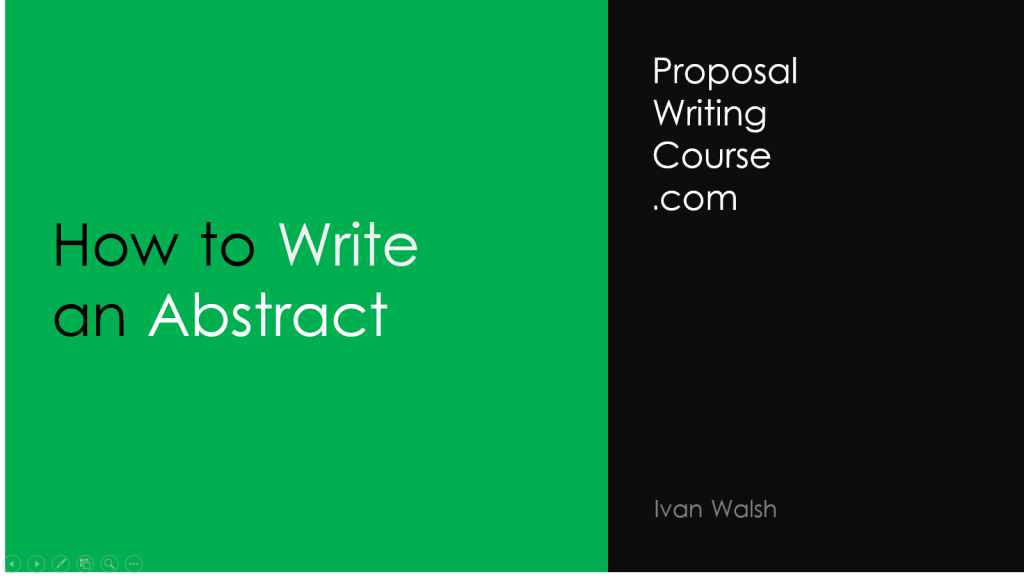Philip Koopman, at Carnegie Mellon University, reminds us that, “Writing an efficient abstract is hard work, but will repay you with increased impact on the world by enticing people to read your publications. Make sure that all the components of a good abstract are included in the next one you write.”
Let’s look at how to write headlines, summaries and abstracts. Before we start, what is an Abstract?
Why We Read Abstracts and Summaries?
When you open your inbox every Monday morning and see a stream of emails crying for attention. Which do you choose? I’d guess it’s the ones with the snappiest headlines, like these:
- Zen and the Art of Remarkable Blogging
- A Simple Four-Step Strategy for Developing Content That Connects
- The Benjamin Franklin Guide to Marketing Your Business Online
- Five Common Headline Mistakes and How to Avoid Them
- Become a Master of Metaphor and Multiply Your Blogging Effectiveness
- Metaphor, Simile and Analogy: What’s the Difference?
These are from CopyBlogger .com and show how smart headlines can tickle your fancy. So, when you read, ‘Are You Leaving Your Readers Out of the Conversation?’ you can’t help but start to answer the question in your mind. And when you do that, you open the article and start to read.
So, good headlines act like hooks bringing you into the story.
Abstracts are also important. We have an ever-increasing need for quick access to information we rely on abstracts and summaries to provide a snapshot of what’s in the article.
If you visualize it as a pyramid, on the top is headlines, then summaries, and then the body of the article. You can see how one leads to the other.
How To Write An Abstract
You have two options. Write it before you start on the main document or after you’ve finished writing, take a break and explore:
- What is the main subject in this article?
- What conclusion has the writer made?
- What message does the writer want to convey?
- What do you want the reader to do after reading the document?
Analyze this and define it in one sentence – this is your ‘topic’ sentence.
Write one topic sentence that covers the entire document, regardless of whether the document is a five page letter or a hundred page annual report.
1. Getting Ideas
Then, look at the recommendations, conclusions, summaries, and results in the final document. When abstracting a technical manual, look at the tutorials and see if these help form the topic sentence.
2. Don’t Use the Document’s Title
Avoid using the formal name of the document as this can be misleading and may not help you write the topic sentence. Chances are the ‘working title’ will be too vague. Parts of the title might serve as modifiers in your topic sentence, but you’ll probably need to go beyond the title.
3. Be Specific
Make the topic sentence as specific as possible.
Avoid writing
“This report describes [document title].”
Instead, write something like
“The results of this [subject] study show that [result].”
4. Use Supporting Sentences
After you identify your topic sentence, write supporting sentences. Make each of these supply specific details about the ideas in the topic sentence. Think of what supports the topic sentence.
- Who?
- What?
- Where?
- When?
- Why?
- How? and
- How much?
Give statistics, results, conclusions, or recommendations that back up the topic sentence. Only use two or three major supporting ideas. Include the less important evidence as subordinate clauses and modifiers.
5. Use Transitions
Arrange the supporting sentences in a logical sequence after the topic sentence. Add whatever transition is needed to connect the supporting sentences to the topic sentence and to connect ideas within the sentences to each other.
Re-write the sentences to improve the connections.
10 Other Ways to Write a Better Abstract
- Write the abstract only when the document is finished. Abstracts written before then are just previews.
- If you are forced to write an abstract before the document is completed, think about its purpose and write a topic sentence. Keep in mind that you’ll need to rewrite the abstract when the document is finished because it will no longer accurately reflect the contents of the document.
- Before starting the abstract, list your thoughts on the document. Group related items together.
- Prioritize the list and put the most important group first. The first few groups form the core of the topic sentence. The rest lead to supporting sentences.
- If you can’t create a topic sentence, write the supporting sentences first. The topic sentence may then become obvious.
- Write for an audience not necessarily up to speed in your subject area. This is important because you never know who will read your abstract.
- Choose acronyms, abbreviations, and technical terms carefully as they may confuse many readers.
- Define the scope of the project in the abstract.
- Re-read your abstract after several days have passed and remove superfluous information and padding.
This technique works for documents of any length from a couple of pages to multi-volumes.
Using Keywords in Abstracts
I’ve added this in as many business documents are published directly to the web. This tip applies to writing abstracts, headlines and summaries.
Use keywords in your Titles, Abstracts, Headlines are documents are file electronically. As users search for documents by keywords, write the documents headings with these keywords in mind.
Likewise, your abstract must contain keywords that about the article, proposal, or report so readers can retrieve it quickly.
What other ways can we improve our business documents?
About the Author: Ivan Walsh provides Business Tips for Smart People on Klariti.com. His also runs the popular Business Planning Blog at http://www.ivanwalsh.com
